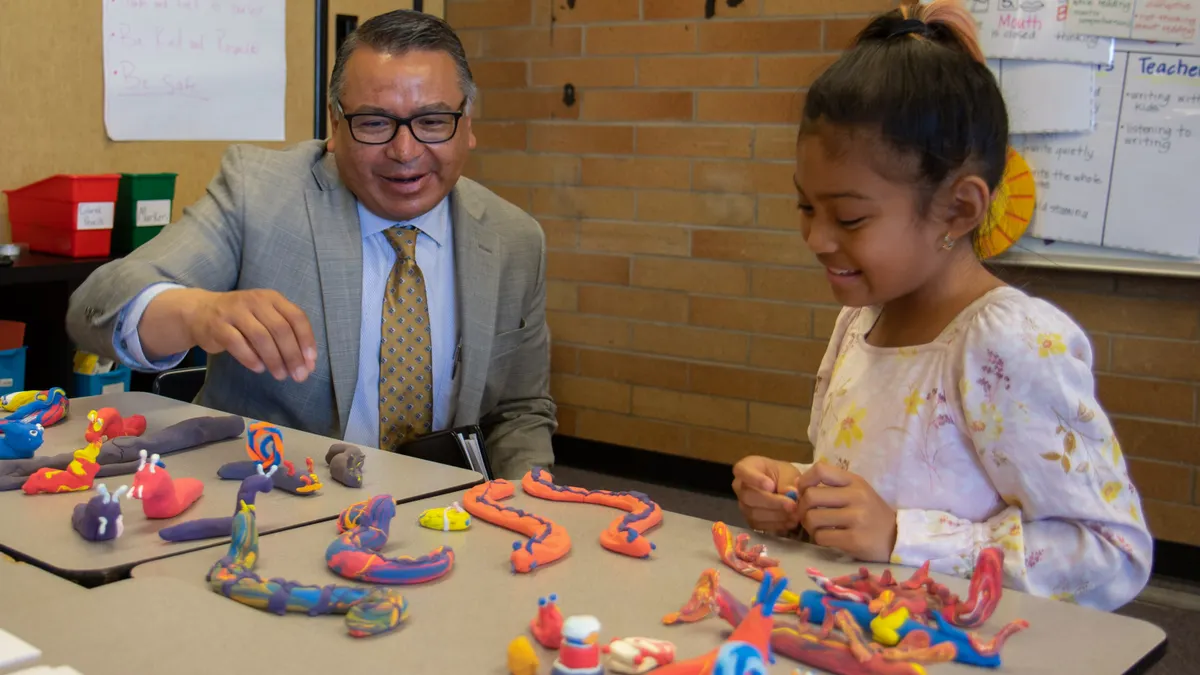Meredith Liu is chief design officer at The Primary School, a tuition-free private school founded by Priscilla Chan in East Palo Alto, California, focused on a whole-child approach. Vida Amanat is the manager of school programs.
We are at a critical juncture in education. Students across the nation are facing remarkably high levels of learning loss, and the problem is particularly acute for low-income students and schools serving predominantly students of color. There is no debating that this is a serious and urgent issue, and discussions about how to address it are happening everywhere. From proposals to create a national tutoring corps to plans to extend the school year and hold school on Saturdays, educational leaders at every level are considering myriad creative approaches to catch students up as they return to classrooms.
But in the midst of this race to address learning loss, one powerful tool seems to be largely absent from these discussions: enrichment. Enrichment programming is a broad category that encompasses a range of courses that fall outside traditional academic priorities, including activities from sports to dance to music to robotics. It has been part of the fabric of our schools for decades as a way of more deeply engaging students and offering them choices based on their passions and interests.
Because enrichment is typically offered in the form of elective courses or out-of-school programs, it puts students in the driver’s seat to follow their passions and investigate their talents. They learn to identify problems, design solutions, think creatively and work collaboratively with peers, and they also form strong bonds with peers and mentors that nurture their social-emotional development. And on top of all the social-emotional benefits, there’s also evidence that some enrichment has a positive impact on academic achievement and reduces dropout.
But enrichment is not universally accessible for all students. A persistent enrichment gap has been widening in recent years, as wealthy families have been shown to spend three times as much on enrichment than families with fewer means. Many schools have faced tough budget and staff allocation decisions that have made them de-prioritize enrichment, while at the same time, after-school programs, which often offer enrichment to students in underserved communities, are laying off staff or closing at alarming rates.
The enrichment gap is quickly becoming a chasm, which will only be further deepened by the sprint to close this past year’s learning gaps.
This is one of the reasons our school, The Primary School, made the strategic decision to prioritize enrichment programming as part of our remote offerings for students this year. As a Bay Area-based organization that serves predominantly low-income families and focuses on providing comprehensive services to support the whole child, we saw how COVID-19 was upending virtually all in-person enrichment options for our families. We also saw how critical it was to keep our students engaged in activities that allowed them to move, play, create, and discover.
Just before the pandemic hit, we had begun a broader effort to ramp up our enrichment offerings at our pre-K/elementary school site. We hired a dedicated staff member to manage our enrichment programming and added an array of new courses, including robotics, Latin Dance, food science and even architecture to inspire our students’ curiosity and let them explore.
When we had to transition to remote learning, we rolled up our sleeves with our incredible partners like EPACenter, Stanford Athletes and Robotics for All, and got creative to fit our students’ needs. We worked together to find COVID-safe ways to maintain both the variety and quality of our programming, and provided all materials to families directly so they had everything they needed to get started. And thanks to the flexibility of remote instruction, we’ve been able to remove the need for transportation and other potential barriers for many low-income families to maximize engagement.
The response and impact has been overwhelmingly positive. In the fall, we had more than a third of our entire student body enrolled in at least one voluntary enrichment course. This has held steady in our spring semester, and we’ve heard enthusiasm from families so far for both the range of offerings and the levels of engagement in the courses. They’ve shared that the new opportunities to explore and create have helped their children stay motivated and excited to learn.
As our students come back to campuses across the country over the next few weeks, many for the first time in a year, enrichment has a renewed purpose and benefit for schools. Enrichment programming can help students reconnect with learning and build new positive associations with school that may have been lost over the past year. Enrichment is one way to reestablish a love of learning after feeling disconnected from their teachers and peers. It also can help reinforce students’ understanding of school as a safe, welcoming and nurturing place after a year of seeing closed doors.
Schools are constantly in the challenging position of deciding where to invest limited resources and time. There are countless competing priorities, and the mounting pressure to close learning gaps as quickly as possible is compounding and exacerbating existing challenges. But if we are going to truly recover and accelerate learning and growth, enrichment must be a priority.
Our students deserve the opportunity to engage their brains and bodies, discover their talents and build their confidence. They need this now more than ever, and our schools and communities will ultimately be the beneficiaries.





 Dive Awards
Dive Awards














